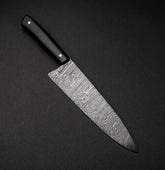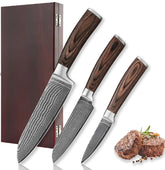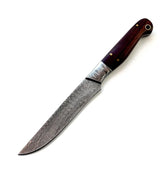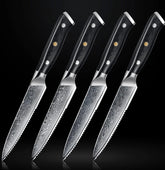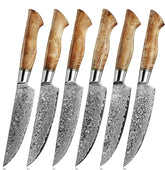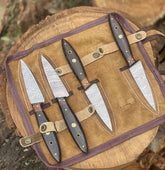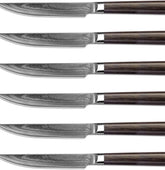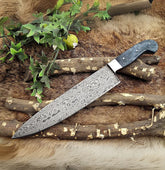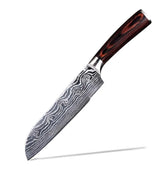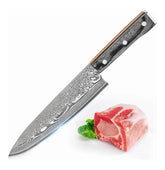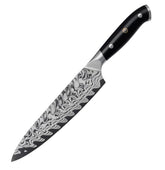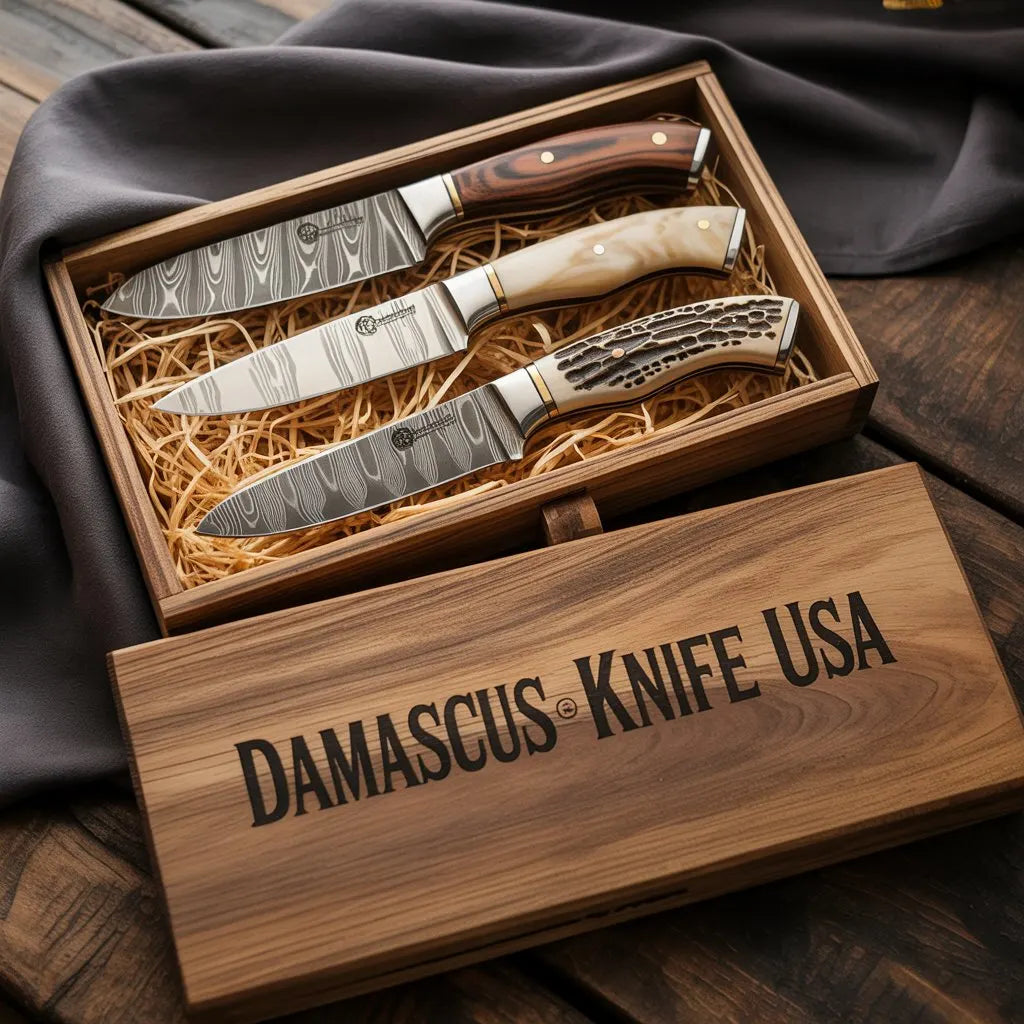Damascus Chefs Knives
Discover the chef’s knife—the most versatile, all-purpose blade trusted by professional chefs and home cooks alike. Also known as a cook’s knife, it’s the flagship of cutlery, perfect for slicing, dicing, and mastering every kitchen task.
-
Kodiak 8 Damascus Steel Chef Knife - G10 HandleKodiak 8" Damascus Steel Chef Knife – G10 Handle Inspired by the raw power and beauty of Alaska’s Kodiak Island, the Kodiak 8" Chef Knife brings performance, style, and precision to your kitchen. Whether you're prepping rustic meals or crafting gourmet dishes, this knife...
- $115.00
$140.00- $115.00
- Unit price
- per
-
TimberEdge Precision Trio – VG10 Core Culinary Knife SetPrecision Meets Craft – A Trio for Every Culinary Task The TimberEdge Precision Trio is designed to elevate every kitchen moment. Crafted with 67 layers of folded Damascus steel and a razor-sharp VG10 core, this 3-piece culinary knife set offers unbeatable precision, balance, and...
- $250.00
$300.00- $250.00
- Unit price
- per
-
Ironroot Legacy Handmade Damascus Steak Knife – 5 Non-Serrated Full-Tang with Premium Wood HandleHand-Forged Elegance for the Modern Table Upgrade your dining experience with the Ironroot Legacy™ Handmade Damascus Steak Knife – a full-tang, non-serrated blade crafted for effortless cutting and timeless elegance. ⚔️ Premium Damascus Steel Blade Forged from over 200 layers of Damascus steel (1095...
- $69.00
$85.00- $69.00
- Unit price
- per
-
Shogun Edge G10 Damascus Steak Knife Set (4-Piece)Precision-Forged Damascus Steel Steak Knives Experience unmatched craftsmanship with the Shogun Edge G10 Damascus Steak Knife Set. Designed for serious steak lovers and culinary perfectionists, this 4-piece set combines legendary materials with modern ergonomic comfort. ? 67-Layer Damascus VG-10 Steel Each knife is expertly...
- $245.00
$280.00- $245.00
- Unit price
- per
-
EmberCut 6-Piece Damascus Steak Knife SetExperience Culinary Precision with the Dynasty 6-Piece Damascus Steak Knife Set Crafted for those who appreciate unmatched performance and refined elegance, this set is forged to impress. From ultra-sharp precision to artisan design, every element of the Dynasty Steak Knife Set is engineered for...
- $310.00
$350.00- $310.00
- Unit price
- per
-
WengiForge Damascus Steak Knife Set – 4-Piece HandcraftedHandcrafted Damascus Steak Knife Set with Wengi Wood Handles Unmatched Cutting Performance Experience the unmatched sharpness of these hand-forged Damascus steak knives. Each blade is crafted from a premium combination of 15N25 and 1080 carbon steel, layered 256 times to create an exquisite twist...
- $170.00
$190.00- $170.00
- Unit price
- per
-
Kyodai 6-Piece Damascus Dining Knife Set – VG10 Core, Pakka HandlePrecision Crafted for the Modern Table Upgrade your dining experience with this 6-piece Damascus dining knife set. Each knife is a perfect fusion of Japanese-inspired craftsmanship and modern utility, delivering smooth, clean cuts with every slice. ? Premium VG10 Damascus Steel Blade Forged with...
- $200.00
$220.00- $200.00
- Unit price
- per
-
BlueRift Edge – Ripple Pattern Damascus Utility BladeHand-Forged Damascus Utility Blade with Blue Camel Bone Handle This meticulously crafted 13.5-inch full tang utility knife brings together timeless design and cutting precision. Featuring a rain-pattern forged Damascus steel blade and a striking blue camel bone handle, it's a perfect fusion of function...
- $150.00
$180.00- $150.00
- Unit price
- per
-
WaveForge 7” Damascus Chef Knife – Rosewood HandlePrecision-Crafted for Everyday Culinary Excellence The WaveForge 7” Damascus Chef Knife delivers professional-grade performance in a beautifully crafted design. Engineered for versatility, it is ideal for slicing, dicing, mincing, and chopping a wide variety of ingredients in your kitchen. ?️ Premium Construction Forged from...
- $139.00
$169.00- $139.00
- Unit price
- per
-
ShadowEdge Damascus Chef Knife – 8 VG10 Core with G10 & Wood HandleHand-Forged VG10 Damascus Chef Knife with G10 Handle Crafted through traditional hand-forging methods, this 8-inch Damascus chef knife features a beautifully layered steel pattern, created by repeated folding and heating. Its hammered blade texture minimizes friction and prevents food from sticking, delivering a precise...
- $160.00
$180.00- $160.00
- Unit price
- per
-
Celestial Wave 8-Inch Damascus Chef KnifeProduct Overview Experience cutting-edge culinary precision with this handcrafted Damascus chef knife, designed for serious cooks and kitchen enthusiasts. Featuring a visually striking blade and a comfortable, balanced handle, this knife blends artisan beauty with professional performance. Features & Details Authentic Damascus Craftsmanship: Forged...
- $150.00
$180.00- $150.00
- Unit price
- per

